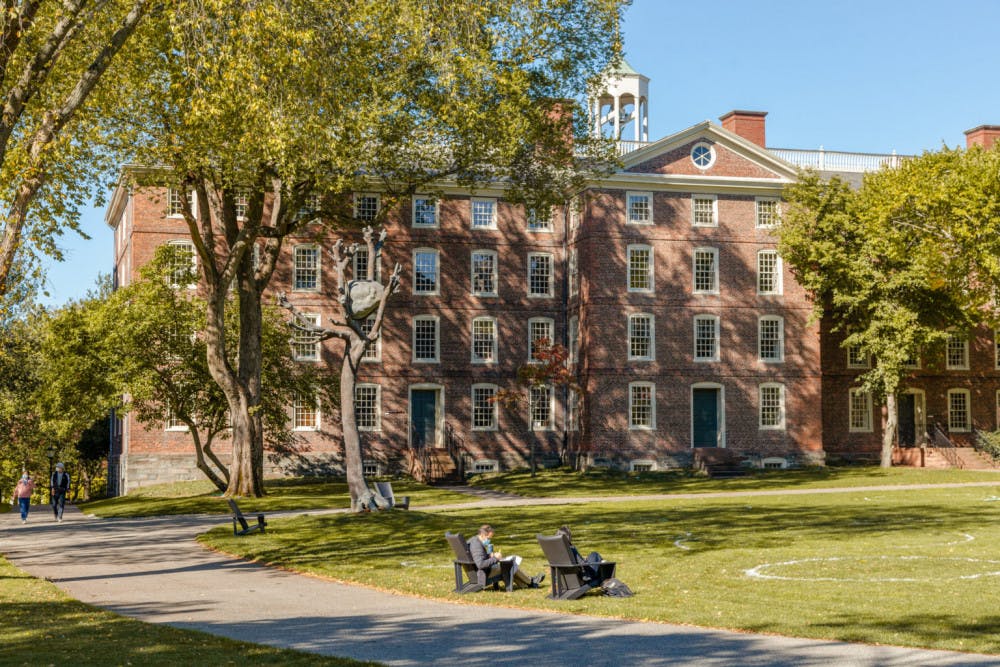Of the sophomores, juniors and seniors enrolled in classes this semester, only 23 percent are living on campus, while 44.2 percent are living off campus or commuting. Another 32.8 percent are studying remotely, according to data provided to The Herald by Dean of the College Rashid Zia '01.
The enrollment data, which was updated Oct. 6, reflects student enrollment decisions after the University announced its phased approach to in-person reopening Aug. 11. Prior to that decision, The Herald reported on student enrollment data collected from the Fall 2020 Location of Study Form sent out July 7.
Like the data from the summer, the new set of data is broken down by class year, financial aid status, gender and membership in historically underrepresented groups. The data does not include first-year students as they can only enroll in the spring and summer terms this academic year.
Between the release of the first data set and the most recent one reviewed by The Herald, a greater number of students opted out of living on campus, with an increased shift to remote learning.
The original number of students who reported they would be studying remotely in the earlier form more than doubled, from 794 to 1,615 students. Conversely, the number of students who declared they would be living on campus decreased from 2,460 to 1,132, reflecting a nearly 50 percent drop. The recent data set also showed a slight increase in the number of students living off campus or commuting this fall, from 1,879 to 2,173.
Out of the three class years, sophomores represent the largest percentage of remote learners. Almost as many sophomores are studying remotely (47.8 percent) as living on campus (47.9 percent). Previously, 19.1 percent of sophomores indicated plans to study remotely.
Originally, 51 percent of juniors declared intentions to live on campus, but currently only 16.1 percent of juniors live in residence halls. Conversely, the number of juniors living off campus increased from 35 percent to 51.7 percent. Similarly, the number of juniors studying remotely also increased, from 17 percent to 32.2 percent. After the University announced its phased reopening plans, every junior previously on the off-campus waitlist was automatically granted off-campus permission.
Seniors, who are automatically granted off-campus permission, also saw significant changes in their location of study numbers. Eleven percent of seniors had planned to study remotely when they indicated preferences to the Office of Residential Life over the summer, but now 20.4 percent are studying remotely.

The percentage of seniors planning to live on campus dropped from 16 percent to 7 percent. Similarly, the percent of seniors studying off campus decreased from 74 percent to 72.6 percent.
The increase in the number of remote learners “was in line with (the University’s) expectations” after the Aug. 11 announcement, Zia wrote in an email to The Herald. He added that the University purposely did not ask students to provide a reason for their change of location of study.
Across class years, international students accounted for the highest percentage of remote students. A total of 45.1 percent of international students now study remotely while only 17.3 percent are living on campus. Additionally, 37.6 percent are living off campus or commuting. Previously, 29.7 percent of international students planned to study remotely, with 32.2 percent planning to study on campus. 38 percent planned to live off campus or commute.
Increases in remote learners and decreases in students living on campus were consistent across aided, unaided, HUG and non-HUG students.
The number of non-HUG students opting for remote learning increased by 17.3 percent — the same amount as the overall student population. The number of HUG students studying remotely increased by 18.3 percent.
The percentage of unaided and aided students who decided to study remotely increased at similar rates. Before Aug 11., 16.1 percent of aided students were planning on studying remotely, which has since increased to 34 percent. Unaided students studying remotely increased from 15 percent to 32 percent, consistent with the trend for the general student body.
The data also reflected a drop in the total number of enrolled students, which Zia attributed to students taking leaves of absence. Across class years, 213 additional students opted to take leave between filling out the early July survey and now.
While it is too late now for students to opt to return to campus, Zia wrote that students living on campus or in Providence may still switch to remote learning, as long as they do not remain in or return to Providence after doing so.





